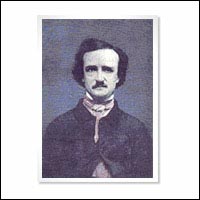 Created in 1997, PSYART is an online, peer-reviewed social bookmark that specializes in the psychoanalytic study of literature and any other art. The archived journal is available free.
Created in 1997, PSYART is an online, peer-reviewed social bookmark that specializes in the psychoanalytic study of literature and any other art. The archived journal is available free. Publication in PSYART means that each article is, in principle, available to any of the 50,000,000 people estimated to use the Internet.
Recent editions include: "Kubla Khan": Genesis of An Archetype; Literary Parallels Stemming from a resemblance in the Authors’ Creative Development: The Extraordinary Similarities between Amos Oz’s The Same Sea and James Joyce's Finnegans Wake; and Suicidal Risk in Lives of Virginia Woolf and Sylvia PlathThe journal hopes to cast its “net as widely as possible in the psychological study of the arts.”
Archived variety includes: an analysis of literary imagery in Freud's dreams; a study of sexualized relationships in the filming of Lolita; an amusing gibe at Lacan; an experimental study of the pronunciation of "picture poems" (complete with sound spectrograms).
Each article is represented by only two things: an author's abstract of 150 words and a hyperlink to the article itself. Click on one of these hyperlinks and you will be connected to a site where PSYART maintains the article you seek.
All abstracts can be searched for topics by the "Find" command in such browsers as Netscape, or Explorer. Because PSYART is a hyperlink journal, containing only abstracts, as many as 500 articles can be current in the site at one time.
The goals of the journal are to become a large repository for current work in this field and to circulate ideas rapidly.
It’s also interactive. A reader can discuss an essay with its author through the author's e-mail address included with the abstract. Or a reader can discuss the article with some eight hundred people in the field through their forum, provided the reader is subscribed, which is a simple process.
PSYART is indexed in both the MLA Bibliography and PSYCINFO. Articles are accessible through Google, AltaVista, Northern Light, and other Internet search engines. That means that literally millions of people could read your article.
The journal accepts articles that have already appeared in print (subject to review by the editors and to the permission of the previous publisher). Similarly, it has no objection to articles that appear on its site being published elsewhere.







No comments:
Post a Comment